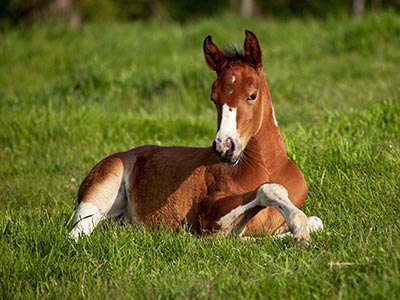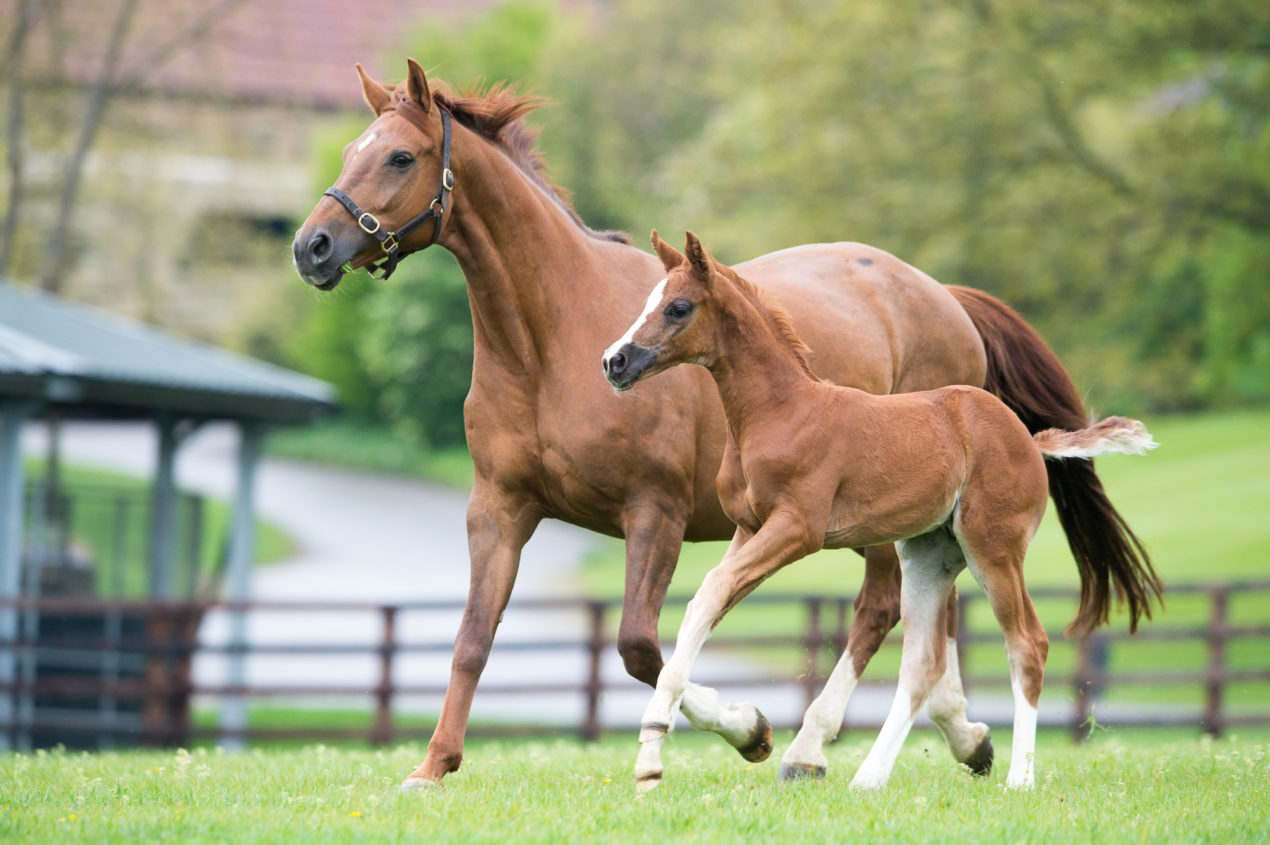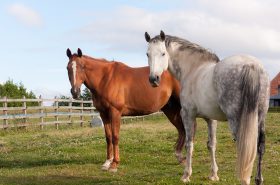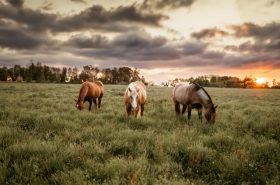Good nutrition is important for any horse, but it’s especially important during the first few years of life.
Poor nutrition can lead to stunted growth, dietary imbalances, and nutrient deficiencies. On the other hand, overfeeding can lead to Developmental Orthopedic Disease. For growing horses, nutritional balance is key.

Weanlings
After four months of age, a weanling’s nutrient requirements will exceed what a mare’s milk can provide. It’s at this time that they will need pasture or supplemental hay and possibly concentrates (via creep feeding) as well. High-quality protein is crucial for muscle, ligament, and tissue development. At six months old, most young horses will need about 675 grams of protein per day. With weanlings, careful attention should be paid to calcium and phosphorous (Ca: P ratio should be 1:1 to 3:1), as well as zinc and copper (Zn: Cu ratio should be 3:1 to 4:1). If you are feeding legume hay, keep in mind that it is typically higher in calcium. Grains are higher in phosphorous, so any changes with either of these ingredients will change your Ca:P ratio. Trace minerals may need to be provided in the form of a supplement or pre-formulated concentrate. It’s also important to feed each weanling as an individual to achieve a steady rate of growth. If you notice they’re growing too quickly or too slowly, adjustments should be made in the diet.
Yearlings
The diet shouldn’t change much from weanling to yearling, but their growth rate does slow by the time they reach a year old. Around 15 months of age, horses should reach 90% of their full height, 95% of their mature bone length, and 70% of their adult weight. If yearlings are on good pasture in spring and summer, this may be all they need to continue moderate growth rate. However, during fall and winter, as well as in times of drought, supplementing with good quality grass hay and some legume hay is needed. If they aren’t on green pasture, adding supplemental fat such as ground flaxseed, chia seed, flaxseed oil, or camelina oil can also be beneficial. As with any dietary change, introduce your fat source slowly. Your yearling should gain around 1.25 pounds (450-600 grams) daily until he’s reached around 18 months of age.
Two and Thee-Year-Olds
By this age, your young horse’s nutrient requirements have declined, but they aren’t quite finished growing yet. Again, forage should be the cornerstone of the diet, and concentrates should only be fed as needed. You can now feed your young horse similarly to how you feed your adult horses, again tailoring the diet to the individual horse’s needs. Keep in mind that once your two or three-year-old goes into training, the nutrient requirements will increase.




